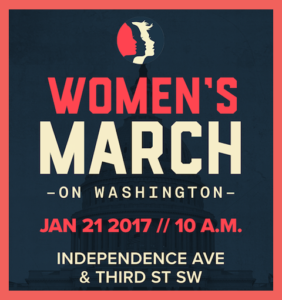As men who are Move to End Violence Movement Makers, we will join women in this weekend’s Women’s March on Washington or one of the 370 allied Marches throughout the Country (“the March”). We march together in solidarity with our partners and children for the protection of our rights, our safety, our health, and our families — recognizing that our vibrant and diverse communities are the strength of our country.
End Violence Movement Makers, we will join women in this weekend’s Women’s March on Washington or one of the 370 allied Marches throughout the Country (“the March”). We march together in solidarity with our partners and children for the protection of our rights, our safety, our health, and our families — recognizing that our vibrant and diverse communities are the strength of our country.
With guidance from our fellow Movement Makers, we offer the following reminders for men supporting the March:
- Honor the Invitation, earn it by educating ourselves. To be invited to march alongside the women organizers is both an honor and a responsibility. As men have historically benefited from the oppression of women, men participating in the March have a duty to learn about the context under which the March emerged. A starting point is to read the Guiding Vision and Definition of Principles of the March and begin to learn the history of the revolutionary organizing and resistance that brought us to this point.
- At the March – Move Back, Move Forward & Listen Up! To march is “to walk with regular and measured tread, as soldiers on parade; advance in step in an organized body”. As men, we must be in sync with the women marching:
- Move Back: Appreciate that women and girls are at the the center of this March because their lives and rights are acutely in danger. Men’s role in this march is to support the leadership of women and girls. Your actions, should be guided by the requests and needs of women and girls. As a reminder, your role at the March is not to “save” women and girls.
- Move Forward: Men must boldly advance the needs of all genders, ages, races, cultures, political affiliations and backgrounds of those in attendance. Men must strengthen their awareness of the physical and emotional space we occupy. It essential to building and maintaining relationships with others at the March.
- Listen Up: Men must give their attention to the voices and experiences of women and girls at the March. Feel the rhythms of chants and protest songs, and read the bold statements on signs and banners. Some will speak truth to power and injustice, some will speak to the the vision of a new world, some will be humorous, some will demand action, others will speak deep and painful truths. These are reasons #WHYWEMARCH, and are continued articulations of what brings us all together.
- Dismantle and leverage our privilege, don’t reinforce it. While the participants at this March will be gender diverse, that does not mean that vulnerability and risk amongst the participants are equal. A unifying principle of the March states that: “Women deserve to live full and healthy lives, free of violence against our bodies.” Violence is a daily reality for many women, including many that have decided to participate in this march, in spite of the potential risk. Whether through learning about male privilege and the ongoing legacy of patriarchy, or practicing thoughtful bystander intervention, men must be active participants in the liberation of women and girls. Indeed, because the march centers all women – Women of Color, Native women, poor women, immigrant women, Muslim women, and queer and trans women, elders and children – men must position themselves to support where they are needed, not necessarily where it may be convenient or comfortable.
- SIGN UP: The March is an access point to a Movement. For many, this march will be an opportunity to participate in a new chapter of intersectional organizing. Simultaneously, the March follows the footsteps of well worn pathways, abundant histories of women’s leadership and resistance. While the March itself will be energetic, passionate, fierce, determined, empowering, and electric, further action is required for the next days, weeks, months and years to ensure the liberation of every last woman and girl.
The interconnected movement to end violence against women and girls demands our participation and long term commitment to ending systematic oppression. It requires prioritizing the leadership of the most marginalized women and girls. It requires interrogation of privileges along axis of gender but also race, sexual orientation, gender identity and expression, socio-economic status, ability, and immigration status, among other forms of identity.
There’s some incredible wisdom that has been shared about this work, including some written by other movement makers. For access to blogs and other resources by the Move to End Violence click here.
Andrew Sta. Ana, Day One
David S. Lee, PreventConnect/California Coalition Against Sexual Assault (CALCASA)
Ed Heisler, Men As Peacemakers
Neil Irvin, Men Can Stop Rape
Quentin Walcott, Connect
Ted Bunch, A CALL TO MEN
(This blog was originally released on Move to End Violence)

